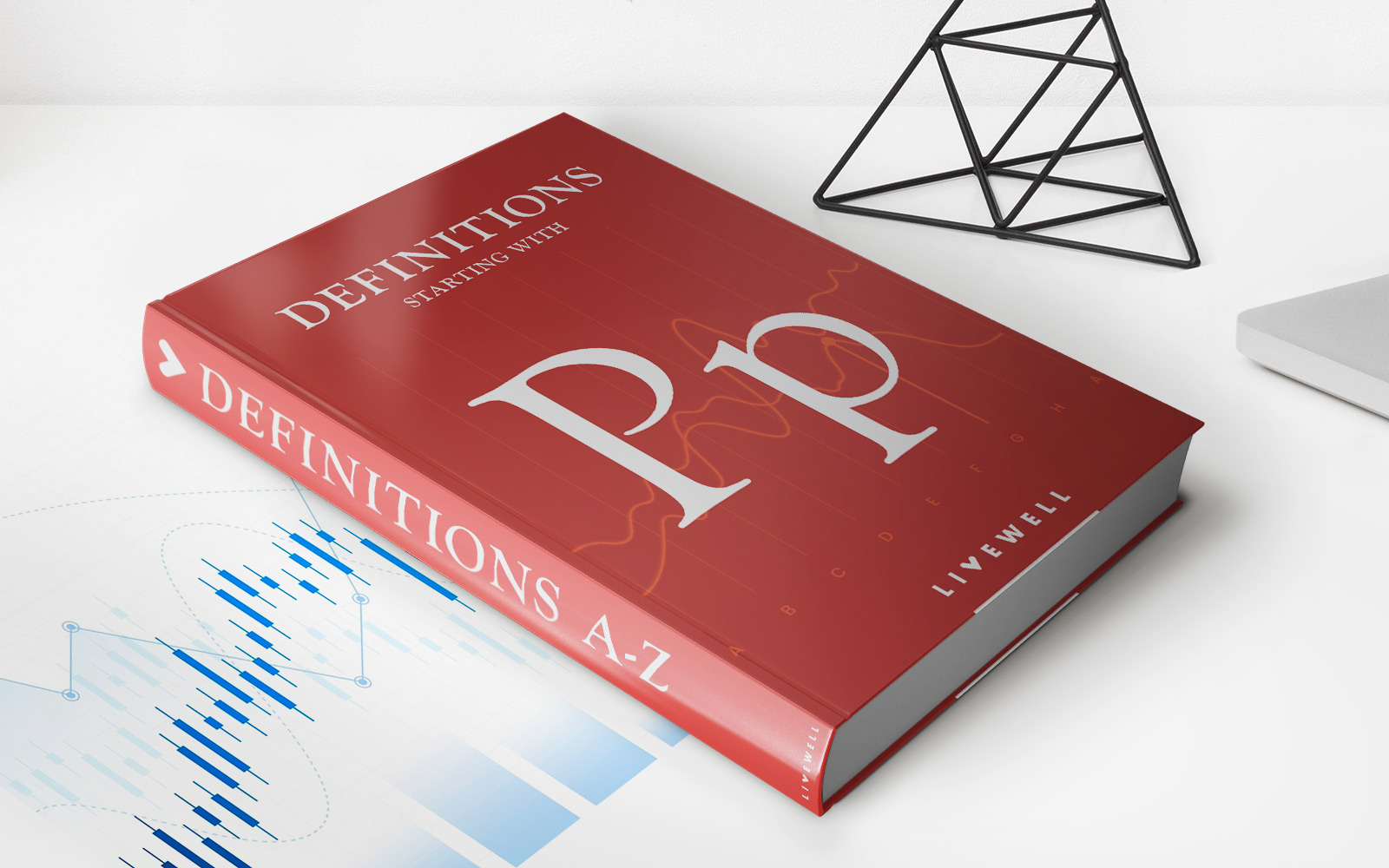

Finance
What Deductible In Health Insurance Mean?
Published: October 30, 2023
Understand what deductible in health insurance means and how it impacts your finances. Get insights and make informed decisions about your healthcare coverage.
(Many of the links in this article redirect to a specific reviewed product. Your purchase of these products through affiliate links helps to generate commission for LiveWell, at no extra cost. Learn more)
Table of Contents
Introduction
Health insurance is a crucial aspect of managing healthcare costs and ensuring financial security in the face of medical emergencies. However, navigating the intricacies and terminology of health insurance can be overwhelming, especially when it comes to understanding deductibles.
A health insurance deductible is an amount that policyholders must pay out of pocket before their insurance coverage kicks in. Think of it as a threshold that must be crossed before the insurance company starts contributing to your medical expenses. Deductibles can vary significantly depending on your insurance plan and can have a significant impact on your out-of-pocket expenses.
Understanding how deductibles work is essential for making informed decisions about your healthcare coverage. In this article, we will delve into the world of health insurance deductibles, exploring their definition, how they work, the different types available, and the pros and cons of high and low deductibles. We will also provide some tips on how to choose the right deductible for your health insurance plan.
So, let’s dive in and unravel the mystery behind health insurance deductibles, empowering you to make informed decisions about your healthcare coverage.
Definition of Health Insurance Deductible
A health insurance deductible refers to the amount of money that a policyholder is responsible for paying out of pocket before their insurance company begins to cover medical expenses. In other words, it is the initial cost that individuals must bear before their insurance plan starts sharing the financial burden.
When you visit a healthcare provider or receive medical services, the cost of those services will be applied towards your deductible. Once you meet your deductible, your insurance coverage will typically kick in, and the insurance company will start paying a portion or all of the eligible expenses, depending on the specific terms of your policy.
For example, let’s say you have a health insurance plan with a $1,000 deductible. If you incur medical expenses totaling $2,500, you would be responsible for paying the first $1,000 out of pocket. After meeting your deductible, the insurance company would pay for the remaining $1,500, subject to any co-pays, co-insurance, or other policy provisions.
It’s important to note that deductibles are separate from monthly premiums. Premiums are the regular payments you make for your health insurance coverage, regardless of whether you have any medical expenses during that period. Deductibles, on the other hand, are a one-time amount that you need to pay before insurance coverage begins.
Now that we have a better understanding of what a health insurance deductible is, let’s explore how deductibles work in more detail.
How Deductibles Work in Health Insurance
Deductibles play a crucial role in how health insurance coverage functions. Understanding how deductibles work is key to managing your healthcare costs and making informed decisions about your insurance plan.
When you receive medical services or visit a healthcare provider, the cost of those services will be initially borne by you until you meet your deductible. This means that if you have a $1,000 deductible, you will be responsible for paying the first $1,000 of your medical expenses out of pocket.
Once your deductible is met, your health insurance plan will typically begin covering a portion or the full cost of eligible medical expenses. This coverage can include a percentage of the cost, known as co-insurance, or a fixed amount, referred to as a copayment (co-pay).
For example, let’s assume you have a health insurance plan with a $1,000 deductible and a co-insurance of 20%. If you incur $5,000 in eligible medical expenses and have already met your deductible, your insurance company would cover 80% of the remaining $4,000, leaving you responsible for the remaining 20% ($800).
It’s important to remember that deductibles typically reset at the beginning of each policy year. So, even if you have met your deductible in the past, you will need to start from zero at the beginning of the new policy year and meet the deductible again before your insurance coverage takes effect.
Additionally, not all services may count towards your deductible. Some preventive care services, such as annual check-ups or vaccinations, may be covered by your insurance without requiring you to meet the deductible. It’s essential to review your specific insurance policy to understand which services are subject to deductible requirements and which are not.
Now that we have covered the basics of how deductibles work in health insurance, let’s explore the different types of health insurance deductibles that are available.
Types of Health Insurance Deductibles
Health insurance deductibles come in various forms, allowing individuals to choose the most suitable option based on their healthcare needs and budget. Let’s take a look at the different types of health insurance deductibles:
- Standard Deductible: This is the most common type of deductible in health insurance. It is a fixed amount that policyholders must meet before their insurance coverage starts.
- Family Deductible: Some health insurance plans have a family deductible, where the total deductible amount needs to be met for the entire family before insurance coverage begins.
- Embedded Deductible: In plans with an embedded deductible, individual deductibles are subsumed within the family deductible. This means that if one family member meets their individual deductible, their coverage kicks in even if the overall family deductible has not been reached.
- High Deductible Health Plan (HDHP) with Health Savings Account (HSA): HDHPs are characterized by higher deductibles and lower premiums. They are typically paired with an HSA, which allows individuals to save pre-tax money to pay for qualified medical expenses.
- Coinsurance Deductible: Some health insurance plans have a coinsurance deductible, where the deductible amount is a percentage of the total cost of medical services rather than a fixed dollar amount.
- Out-of-Pocket Maximum: Although not a deductible per se, the out-of-pocket maximum is an important factor to consider. It represents the maximum amount of money that you will have to pay for covered medical expenses in a given year. Once this maximum is reached, your insurance plan will cover 100% of eligible expenses.
When choosing a health insurance plan, it is vital to consider these different types of deductibles and evaluate which option best aligns with your healthcare needs and financial situation.
Now that we have explored the various types of health insurance deductibles, let’s examine the pros and cons of high and low deductibles.
Pros and Cons of High and Low Deductibles
Choosing between a high deductible and a low deductible can significantly impact your healthcare costs and financial stability. Understanding the pros and cons of each option will help you make an informed decision. Let’s take a closer look at the advantages and disadvantages of high and low deductibles:
High Deductibles:
Pros:
- Lower Premiums: High deductible health plans often have lower monthly premiums, which can help save money in the long run.
- Health Savings Account (HSA): Some high deductible plans are eligible for an HSA, allowing you to save pre-tax dollars for qualified medical expenses.
- Financial Incentive for Cost-Consciousness: With a high deductible, you have a greater financial responsibility for your medical expenses, which can encourage you to make more cost-conscious decisions about healthcare services.
Cons:
- Higher Out-of-Pocket Costs: High deductibles mean that you will have to pay a significant amount out of pocket before your insurance coverage kicks in.
- Delayed Coverage: Until you meet your deductible, you may have to bear the full cost of medical services, which can be challenging for those with significant healthcare needs.
- Financial Burden: In the event of a medical emergency or unexpected illness, the high deductible can place a heavy financial burden on individuals and families.
Low Deductibles:
Pros:
- Immediate Coverage: With a low deductible, your insurance coverage starts soon after incurring medical expenses, providing more financial support upfront.
- Predictable Costs: You have a clearer understanding of your financial responsibility since the deductible is lower, allowing for better budgeting.
- Less Financial Stress: Lower deductibles can provide peace of mind, especially for those with ongoing healthcare needs or chronic conditions.
Cons:
- Higher Premiums: Low deductible plans often come with higher monthly premiums, which can increase overall healthcare costs.
- Less Incentive for Cost-Consciousness: With lower out-of-pocket expenses, individuals may be less mindful of healthcare costs, potentially leading to unnecessary utilization and increased premiums over time.
It’s important to carefully evaluate your healthcare needs, financial situation, and risk tolerance when deciding between a high deductible and a low deductible health insurance plan. Assessing the trade-offs will help you choose the option that best suits your circumstances.
Now that we have explored the pros and cons of high and low deductibles, let’s discuss some strategies for choosing the right deductible for your health insurance plan.
Choosing the Right Deductible for Your Health Insurance Plan
Choosing the right deductible for your health insurance plan is a crucial decision that requires careful consideration of your healthcare needs, budget, and risk tolerance. Here are some strategies to help you make an informed choice:
- Assess Your Healthcare Needs: Evaluate your medical history, frequency of doctor visits, and any ongoing conditions or prescriptions. If you require regular medical care or have chronic conditions, a low deductible plan may provide better financial protection.
- Evaluate Your Budget: Consider your financial situation, including monthly income, savings, and emergency funds. A high deductible plan with lower premiums may be more suitable if you have the financial means to cover larger out-of-pocket expenses.
- Weigh the Risk: Assess your risk tolerance. If you are comfortable taking on a higher level of financial responsibility in exchange for lower premiums, a higher deductible plan may be the right choice. However, if the potential financial burden is a significant concern, a low deductible plan might provide greater peace of mind.
- Consider Overall Costs: Look beyond the deductible and consider the total cost of the insurance plan, including premiums, co-pays, co-insurance, and out-of-pocket maximums. Calculate potential out-of-pocket expenses for both low and high deductible plans to determine which option may be more cost-effective in the long run.
- Account for Life Changes: Anticipate any life changes that may affect your healthcare needs and finances, such as planning for a family, managing a chronic condition, or nearing retirement. Choose a deductible that aligns with your future expectations.
- Explore Health Savings Accounts (HSAs): If you opt for a high deductible health plan, consider opening an HSA. HSAs offer tax advantages and can help you save for medical expenses, providing additional financial flexibility.
- Read and Understand the Policy: Carefully review the terms and conditions of each insurance plan. Look for any exclusions, limitations, or restrictions that may impact coverage and costs. Make sure that the deductible amount and associated details align with your needs and preferences.
Remember, there is no one-size-fits-all answer when it comes to choosing the right deductible for your health insurance plan. It’s a personal decision that requires thoughtful consideration and balancing of various factors. Assess your healthcare needs, financial situation, and risk tolerance to make a well-informed choice that provides the best coverage and affordability for your unique circumstances.
Now that we have discussed strategies for choosing the right deductible, let’s explore some tips for meeting your deductible efficiently.
Strategies for Meeting Your Deductible
Meeting your health insurance deductible can be a significant financial responsibility. However, there are strategies you can employ to help manage and meet your deductible efficiently. Here are some tips to consider:
- Budget and Plan: Set aside funds specifically dedicated to covering your deductible expenses. Budgeting and planning ahead can help you better manage your healthcare costs and ensure that you have the necessary funds when needed.
- Take Advantage of Preventive Care Services: Many health insurance plans cover preventive care services, such as vaccinations, annual check-ups, and screenings, without requiring you to meet your deductible. Take advantage of these services to stay proactive with your health while saving on out-of-pocket costs.
- Research and Compare Costs: Before seeking medical services or procedures, research and compare costs from different providers. Prices for the same services can vary significantly, and choosing a more affordable option can help you save money towards meeting your deductible.
- Use In-Network Providers: Utilize healthcare providers and facilities within your insurance network. In-network providers usually have negotiated rates with the insurance company, resulting in lower costs for you and potentially helping you reach your deductible faster.
- Be Mindful of Out-of-Pocket Expenses: Keep track of your expenses and be aware of how close you are to meeting your deductible. Understanding your out-of-pocket expenses can help you make informed decisions about your healthcare and budget accordingly.
- Maximize Prescription Savings: If you have ongoing prescriptions, explore generic options and compare prices at different pharmacies. Some pharmacies offer prescription discount programs that can help reduce the cost of your medications and contribute towards meeting your deductible.
- Utilize Flexible Spending Accounts (FSAs) or Health Savings Accounts (HSAs): If you have access to an FSA or HSA, allocate pre-tax funds towards your deductible. These accounts can provide additional financial support for meeting your healthcare expenses.
- Consider Timing of Procedures: If you have planned medical procedures or treatments, try to time them strategically. Scheduling procedures towards the end of the year, when you are closer to meeting your deductible, can help maximize your insurance coverage and reduce your out-of-pocket expenses.
- Seek Financial Assistance: If you are facing financial hardship and struggling to meet your deductible, reach out to your healthcare provider or insurance company. They may have financial assistance programs or payment plans available to help alleviate the burden.
By implementing these strategies, you can navigate the process of meeting your health insurance deductible in a more cost-effective and manageable manner.
Now that we have explored strategies for meeting your deductible, let’s summarize the key points covered in this article.
Conclusion
Understanding health insurance deductibles is essential for managing healthcare costs and making informed decisions about insurance coverage. A health insurance deductible represents the amount individuals must pay out of pocket before their insurance plan starts covering medical expenses. Choosing the right deductible requires careful consideration of your healthcare needs, budget, and risk tolerance.
We explored the different types of health insurance deductibles, including standard deductibles, family deductibles, embedded deductibles, high deductible health plans with health savings accounts (HSAs), coinsurance deductibles, and out-of-pocket maximums. Each type has its advantages and disadvantages, and it’s crucial to evaluate which option aligns best with your circumstances.
Additionally, we discussed the pros and cons of high and low deductibles. High deductible plans typically have lower premiums but require individuals to pay a significant amount out of pocket before coverage starts. Low deductible plans offer more immediate coverage but often come with higher premiums. Understanding the trade-offs is crucial when deciding which deductible level is the most suitable for your needs.
We also provided strategies for meeting your deductible efficiently, including budgeting and planning, utilizing preventive care services, researching and comparing costs, using in-network providers, tracking out-of-pocket expenses, maximizing prescription savings, and utilizing flexible spending accounts (FSAs) or health savings accounts (HSAs). These strategies can help you manage and meet your deductible in the most cost-effective manner.
Remember, the choice of deductible is a personal decision that requires careful evaluation of your healthcare needs, financial situation, and risk tolerance. By selecting the right deductible and employing smart strategies, you can better navigate the complexities of health insurance and protect yourself financially in the face of medical expenses.
Now armed with knowledge about health insurance deductibles, you are better equipped to make informed decisions about your healthcare coverage and confidently navigate the world of health insurance.














